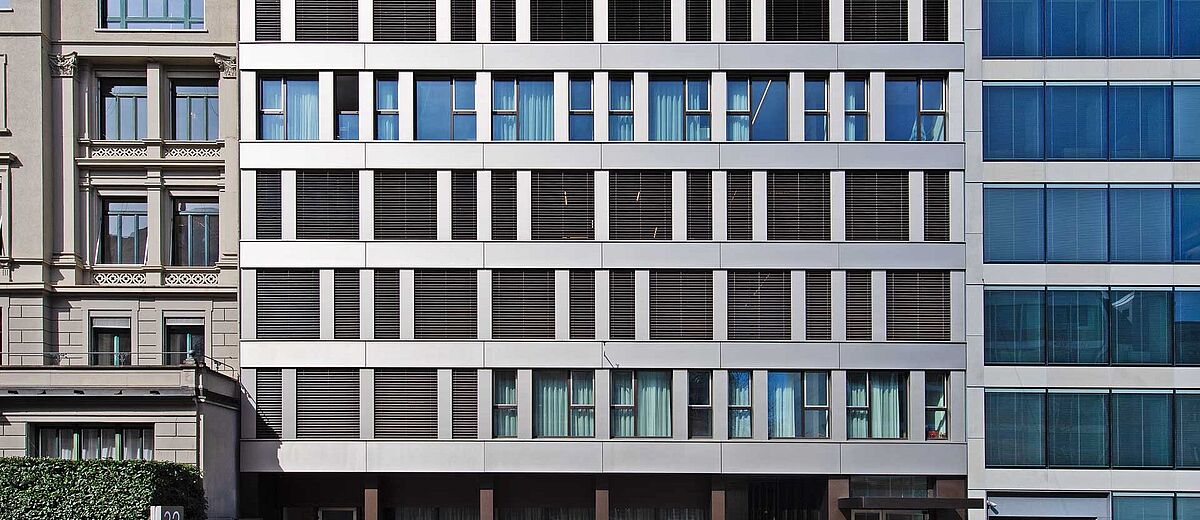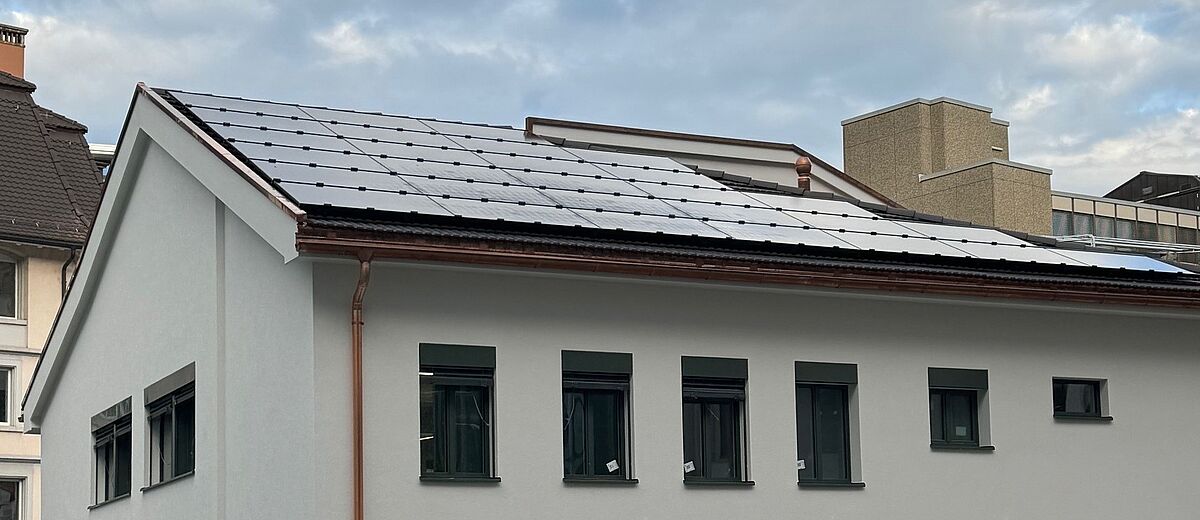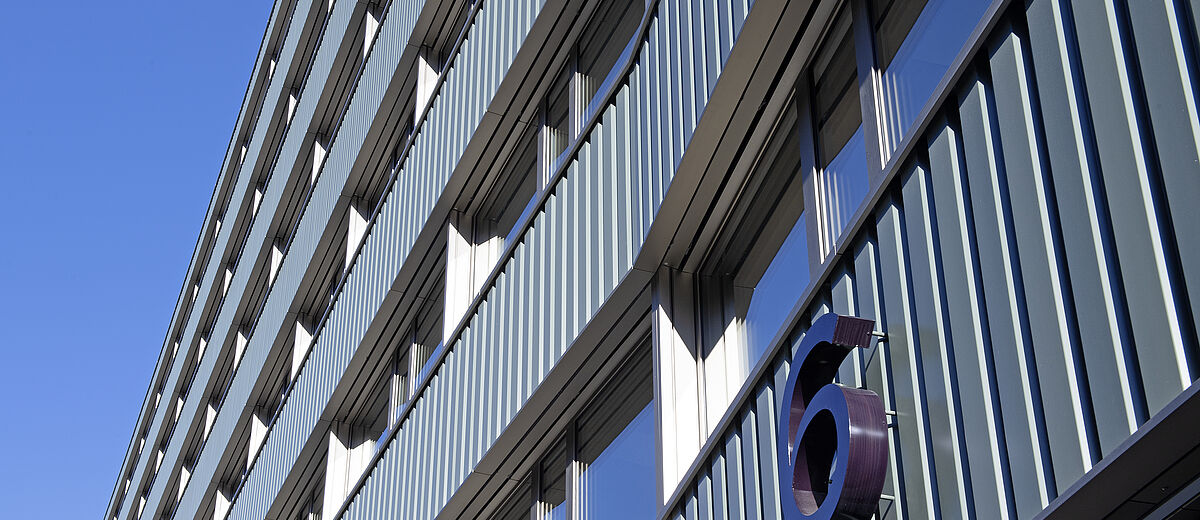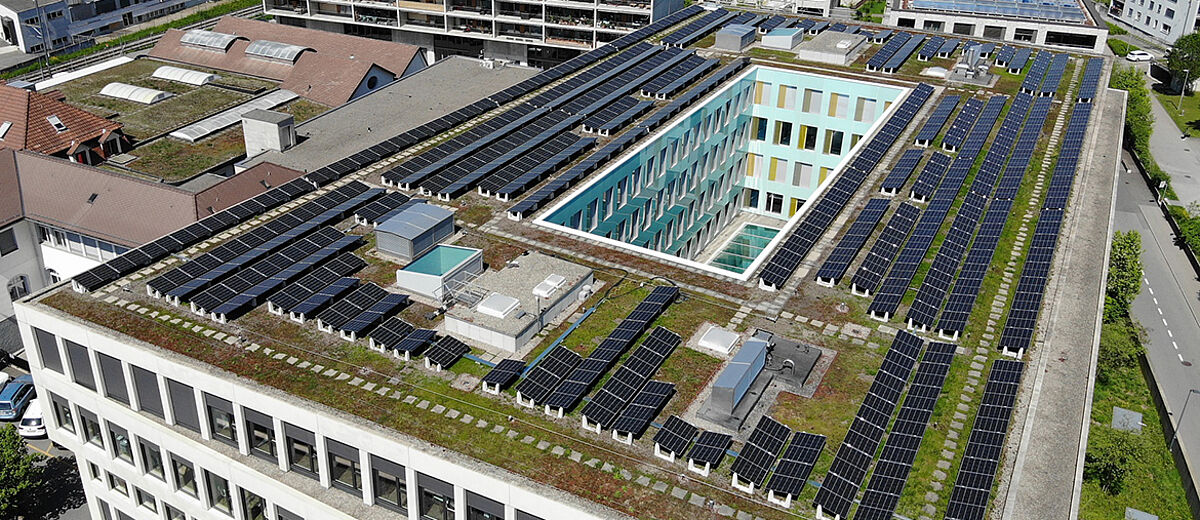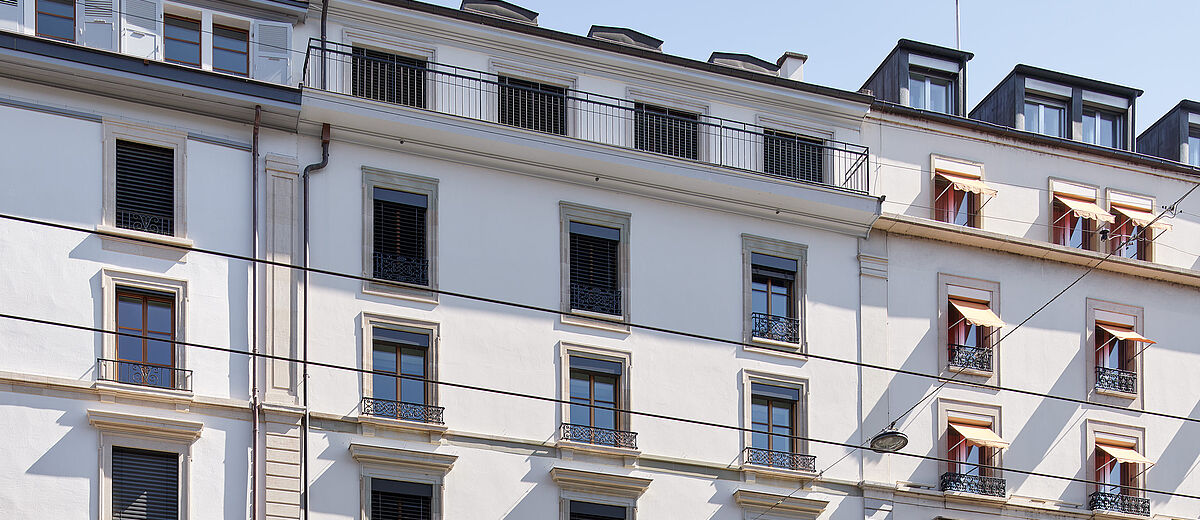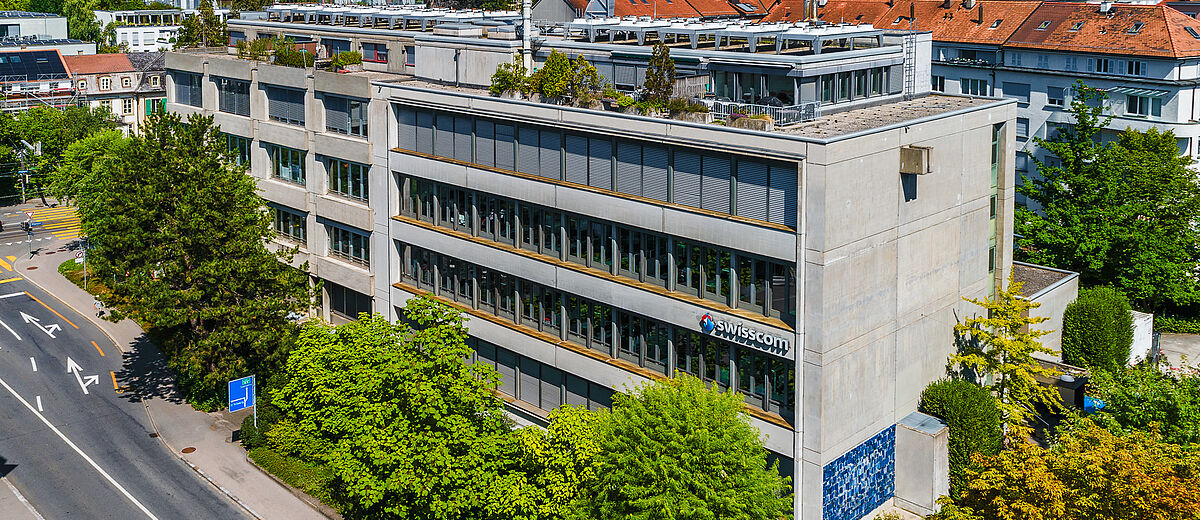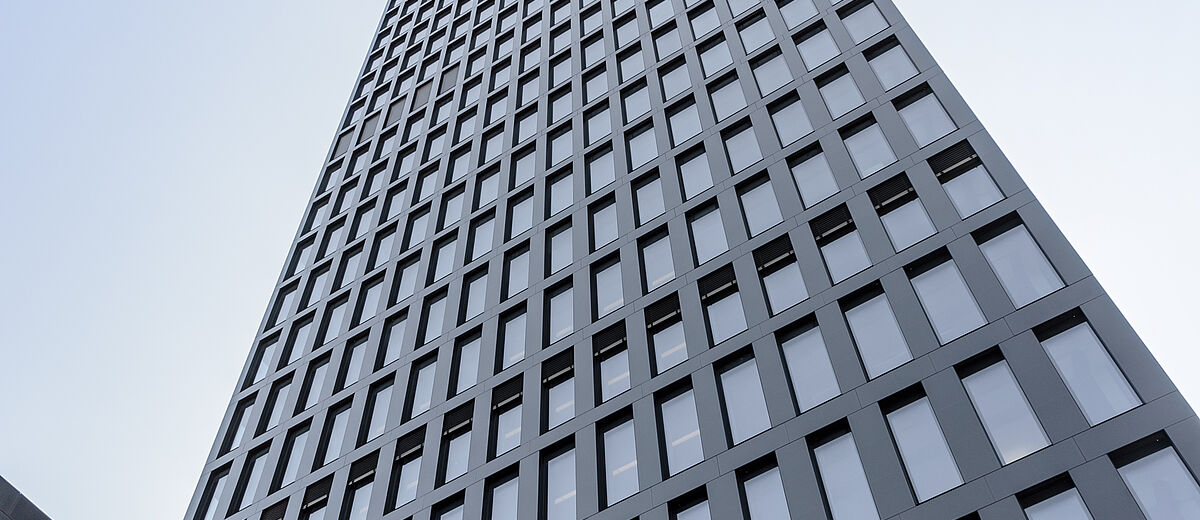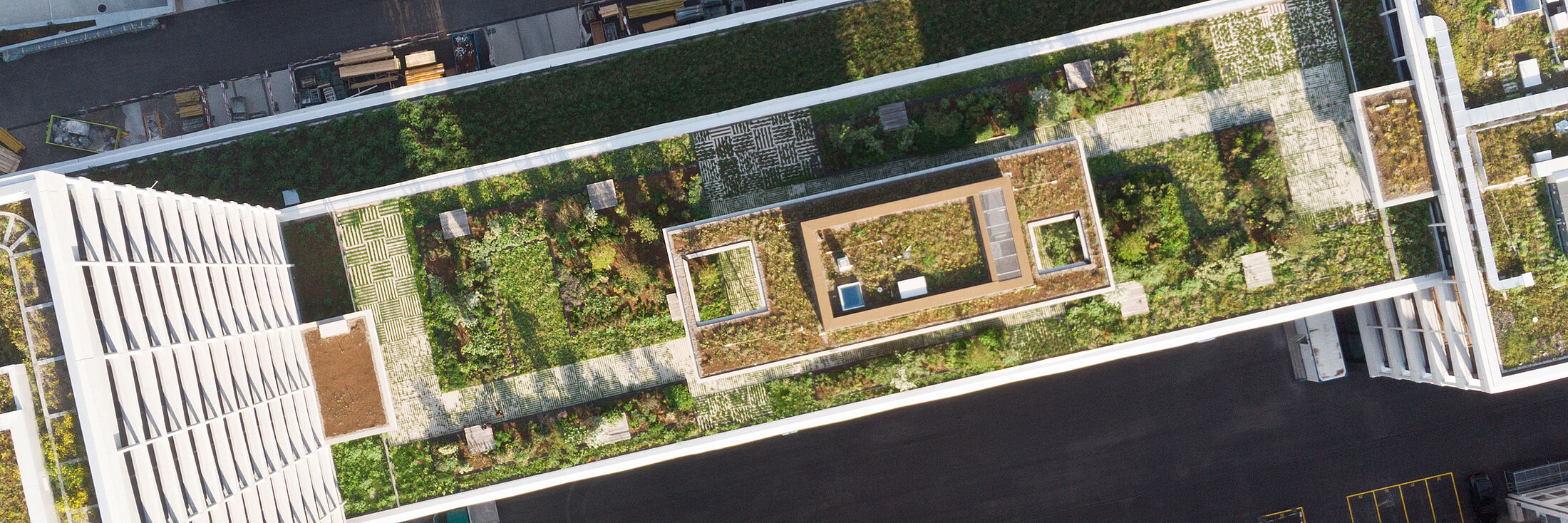
CO2 reduction path and climate strategy
We want to minimise the negative impact of our business activities on the environment and health as much as possible and have set ourselves a CO2 reduction target. Doing so, we also examine the extent to which climate risks could affect our buildings.
Risks and impacts of climate change
We examine the extent to which environmental influences and climate risks affect our buildings or could affect them in the future. Due to the location, the exposure of our portfolio to natural hazards such as floods, landslides or avalanches is rather limited. We see rising temperatures in summer as the greatest risk in connection with the physical effects of climate change. Adaptation to hotter summers is incorporated into the guidelines for new construction and modernisation. In the new replacement building Clime in Basel, for example, we installed innovative electrochromic windows to reduce the amount of cooling energy required. We counteract the possible transition risks such as higher CO2 prices or stricter building regulations with our CO2 reduction path.
In the 2023 Annual Report, we are reporting for the first time in accordance with the TCFD (Taskforce on Climate-Related Financial Disclosures) requirements and communicating more detailed information on our assessment of the physical risks associated with climate change:
CO2 reduction target and CO2 reduction path
Since the launch of our sustainability programme in 2010, we have been able to reduce the specific Scope 1 and 2 emissions of our properties by more than half to 8.9 kg CO2e per square metre. In 2020, we calculated, analysed and defined a CO2 reduction path until 2050. In doing so, we were guided by international and national targets and framework conditions, but also by the actual conditions in the individual buildings. The details of the scenario on which the reduction path is based can be found in the Sustainability Report 2020. The base year for the CO2 reduction path and the interim targets is 2019.
2023, we have compared our CO2 reduction pathway with CRREM’s 1.5 °C decarbonization pathway. The assumptions regarding the replacement of heating systems and renovation measures remain unchanged, but some adjustments were necessary with regard to area definitions and emission factors to facilitate comparability. From today’s perspective, we are well on track with our portfolio to make our contribution to the 1.5 °C target (“1.5 °C target-aligned”).
CO2 target
Halving specific CO2 emissions by 2015.
By 2035, CO2 intensity is to be halved compared to 2019 and the share of scope 1 emissions from fossil fuels is to be reduced to near zero. Net zero is the target for operational emissions (scope 1, scope 2 and scope 3) by 2050.

In order to continuously reduce the CO2 emissions of our portfolio, our priorities are as follows:
| Area | Measures / Targets |
|---|---|
Reduce CO2 intensity of energy consumption | |
| Replace fossil fuel heating by heating with a lower CO2 footprint: dependent (in part) on lifecycle |
|
| Sourcing of electricity |
|
Improve energy efficiency | |
| Energy renovation (insulation, replacing windows): dependent on lifecycle |
|
| Measures not dependent on lifecycle (e.g. lighting) |
|
| Optimisation of operations |
|
Own production of renewable energy | |
| Increasing own photovoltaic capacity |
|
Embodied carbon
CO2 emissions generated during the production of the building materials used in construction and during the construction process itself (Scope 3) are not included in our CO2 reduction path. In the 2022 business year, we had the built-in CO2- emissions ("embodied carbon") of our three current new replacement buildings (ATMOS and B2Binz in Zurich and Clime in Basel) calculated. Based on these analyses, the various levers for reducing embodied carbon are now being discussed in workshops with the employees in the asset management and construction departments and systematically integrated into the specifications and planning. Thanks to the use of low-carbon cement, for example, 82 tonnes of CO2 were saved in the new B2Binz building in Zurich. Changing the material used for the façade cladding from an aluminium sheet to a steel sheet also led to considerably lower emissions.
